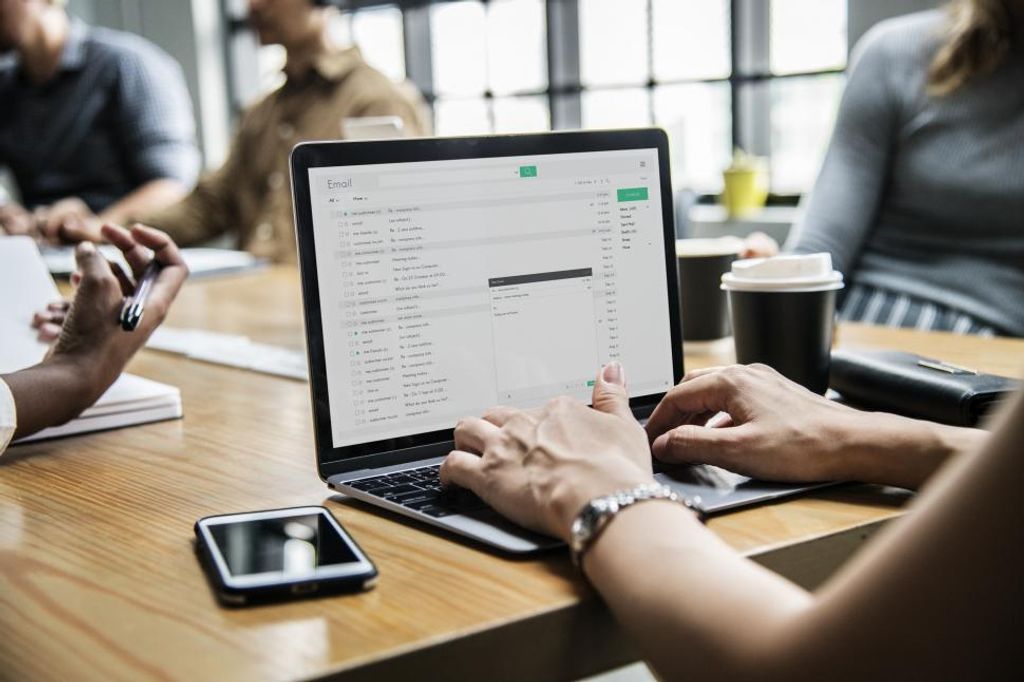
Email management is crucial for freelancers to stay organized and efficient in their work. With the increasing volume of emails received on a daily basis, it can be overwhelming to manually handle each one. However, by automating email management tasks, freelancers can save time and focus on more important aspects of their work. In this article, we will explore the importance of email management for freelancers and provide practical tips on how to automate email management processes.

When it comes to streamlining your inbox, there are several strategies you can implement to save time and stay organized:
Implementing these strategies will help you maintain a clean and efficient inbox, allowing you to focus on the important tasks at hand.
Once you have streamlined your inbox, the next step is to organize your emails effectively. Here are some tips to help you stay organized:
By organizing your emails, you can easily locate important messages, reduce clutter, and improve your overall email management workflow.
Setting up email filters is an essential step in managing your inbox efficiently. Filters allow you to automatically categorize and prioritize incoming emails based on specific criteria. Here are some key points to consider when setting up email filters:
Tip: Use descriptive names for your filters to easily identify their purpose.
By setting up email filters, you can save time and ensure that important emails are not buried in your inbox. Take some time to review your email patterns and create filters that align with your workflow and priorities.
Automating email responses can save freelancers a significant amount of time and effort. By setting up automatic replies, freelancers can ensure that clients and potential clients receive a prompt response even when they are busy or unavailable.
One effective way to automate email responses is by using email templates. These templates can be customized to include the freelancer's contact information, availability, and frequently asked questions. By using templates, freelancers can quickly respond to common inquiries and provide consistent and professional communication.
Another useful tool for automating email responses is email scheduling. With email scheduling, freelancers can compose emails in advance and schedule them to be sent at a specific time. This is particularly helpful for freelancers who work across different time zones or have a busy schedule. By scheduling emails, freelancers can ensure that important messages are sent at the most appropriate time.
In addition to saving time, automating email responses can also improve client satisfaction. Clients appreciate receiving timely responses, and automated replies can help freelancers maintain a professional image and build trust with their clients.
Overall, automating email responses is a valuable strategy for freelancers to streamline their communication and improve their productivity.

When choosing an email client, it's important to consider the features and functionality that best suit your needs. Here are some key factors to consider:
Remember, the right email client can greatly enhance your productivity and efficiency as a freelancer.
When choosing the right email client for your freelance business, there are several key features to consider. These features can greatly enhance your productivity and efficiency in managing your emails. Here are some important features to look for:
Choosing the right email client is crucial for freelancers who want to maximize their productivity. One important factor to consider is the integration with productivity tools. Look for an email client that seamlessly integrates with popular productivity tools such as project management software, calendar apps, and note-taking apps. This integration allows you to easily access and manage your tasks, appointments, and notes directly from your email client, saving you time and effort.
Mobile accessibility is a crucial factor to consider when choosing an email client. With the increasing use of smartphones and tablets, it is important to have the ability to access and manage your emails on the go. Look for email clients that offer mobile apps or have a responsive web interface that adapts to different screen sizes. This ensures that you can stay connected and respond to important emails even when you are away from your computer.

When personalizing your email templates, it's important to make sure that your message resonates with the recipient. One way to do this is by using bold formatting to highlight important keywords or phrases. Additionally, you can use italics to add subtle emphasis where needed.
If you have structured, quantitative data to present, consider using a Markdown table. Tables can help organize information in a clear and concise manner. On the other hand, if you have less structured content such as steps or a series of related items, a bulleted or numbered list can be more appropriate.
Here's an example of a Markdown table:
Remember, the goal is to create email templates that are both visually appealing and effective in conveying your message. Experiment with different formatting techniques and test the templates to see what works best for your audience.
Tip: Keep your email templates concise and to the point. Avoid including unnecessary information that may overwhelm the recipient.
When creating email templates, it is important to include relevant information that is tailored to the recipient. This can include their name, company, or any specific details that are relevant to the email's purpose. By personalizing the email, you can make it more engaging and increase the chances of a response. Additionally, it is important to optimize the template for mobile devices, as more and more people are accessing emails on their smartphones. This ensures that the email is easily readable and visually appealing on smaller screens.
When optimizing your email templates for mobile devices, it is important to consider the smaller screen size and limited attention span of mobile users. Simplicity is key, so focus on concise and clear content that can be easily read and understood on a mobile device. Additionally, make sure your email templates are responsive and adapt to different screen sizes and orientations. This ensures that your emails will look good on any device and provide a seamless user experience.
To further enhance the mobile experience, consider implementing a table to present structured, quantitative data. Tables can help organize information in a visually appealing and easy-to-read format. Alternatively, you can use a bulleted or numbered list for less structured content, such as steps or a series of related items.
Remember, mobile optimization is crucial in today's digital age where more and more people are accessing emails on their smartphones and tablets. By optimizing your email templates for mobile devices, you can ensure that your messages are effectively delivered and received by your audience.
Once you have created your email templates, it is important to test and refine them to ensure they are effective. Here are some tips to help you optimize your email templates:
Remember, the key to effective email templates is to constantly iterate and improve them based on your audience's preferences and needs.

Unsubscribing from unwanted emails is an important step in managing your inbox. By removing yourself from email lists that no longer serve you, you can reduce clutter and improve your productivity. Here are some tips to help you unsubscribe effectively:
Remember, unsubscribing from unwanted emails can help declutter your inbox and improve your email management workflow.
Managing email subscriptions and newsletters is an important aspect of email management for freelancers. By organizing your subscriptions effectively, you can ensure that your inbox remains clutter-free and that you only receive relevant content. Here are some tips for organizing your subscriptions:
Email filters are a powerful tool for managing your subscriptions and newsletters. By setting up filters, you can automatically organize incoming emails into specific folders or labels, making it easier to find and read the content you're interested in. Here are some tips for effectively using email filters:
By utilizing email filters, you can declutter your inbox and ensure that your important emails are easily accessible. Remember to regularly review and update your filters to adapt to changes in your subscriptions and preferences.
Tip: Consider creating a separate email address specifically for newsletters and subscriptions to keep them separate from your primary work email.
Creating a separate email address can be a useful strategy for managing your emails more effectively. By having a dedicated email address for specific purposes, such as subscribing to newsletters or signing up for online services, you can keep your main inbox clutter-free. Here are some benefits of creating a separate email address:
Consider creating a separate email address to streamline your email management and improve your productivity.
In conclusion, automating your email management as a freelancer can greatly improve your productivity and efficiency. By utilizing tools and techniques such as email filters, templates, and scheduling, you can save valuable time and focus on more important tasks. Streamlining your email workflow not only helps you stay organized, but also ensures that you never miss important messages from clients or potential opportunities. Additionally, by automating repetitive tasks, you can reduce the risk of errors and improve the overall quality of your communication. Take control of your inbox and experience the benefits of automated email management today!
Email management is important for freelancers because it helps in streamlining their inbox, organizing their emails, setting up email filters, and automating email responses. This ensures that freelancers can efficiently manage their communication with clients and stay organized.
The best email client for freelancers depends on their specific needs and preferences. Some popular email clients for freelancers include Gmail, Outlook, and Thunderbird. It is important to choose an email client that offers key features such as integration with productivity tools and mobile accessibility.
Freelancers can create effective email templates by personalizing them, including relevant information, optimizing them for mobile devices, and testing and refining them. Personalizing templates helps in building a connection with clients, while including relevant information ensures clarity. Optimizing templates for mobile devices is important as many clients access emails on their smartphones.
The best way to manage email subscriptions and newsletters is by unsubscribing from unwanted emails, organizing subscriptions, using email filters for newsletters, and creating a separate email address. Unsubscribing from unwanted emails helps in decluttering the inbox, while organizing subscriptions and using filters makes it easier to find and read newsletters. Creating a separate email address specifically for newsletters helps in keeping the main inbox clean.
Freelancers can streamline their inbox by using email filters to automatically categorize and prioritize incoming emails, archiving or deleting unnecessary emails, and setting up folders or labels to organize emails. They can also use email management tools and techniques to efficiently process and respond to emails, such as the Inbox Zero method.
Yes, it is possible to automate email responses as a freelancer. Email automation tools and features allow freelancers to set up automatic replies, predefined templates, and scheduled sending of emails. This can save time and ensure timely responses to client inquiries and requests.